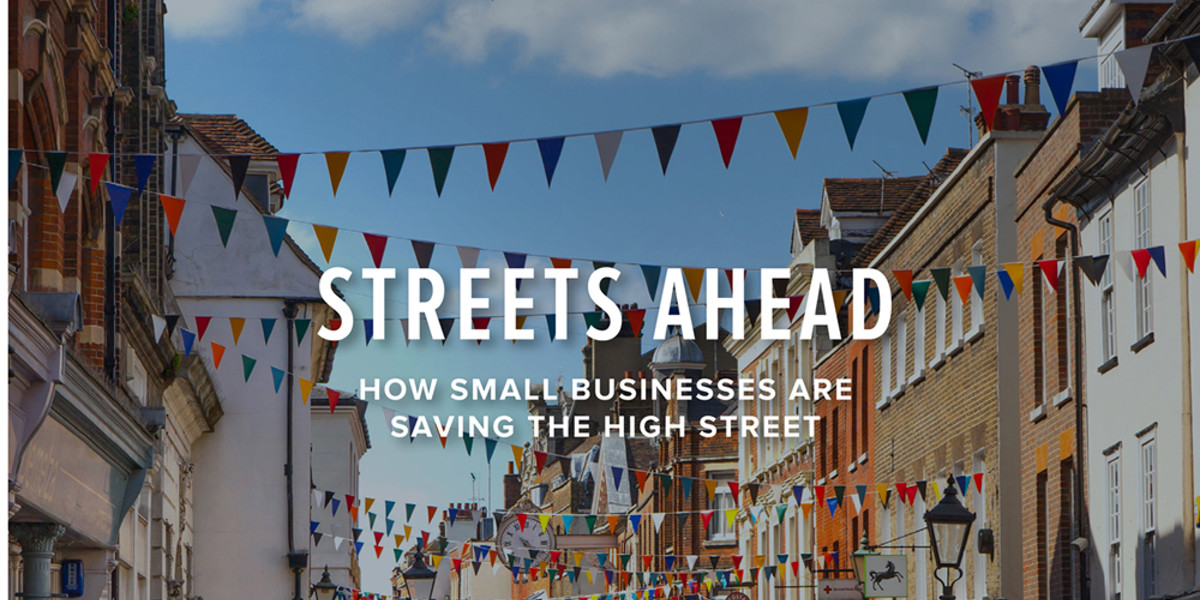Foreword
There is no one silver bullet that can overcome the challenges facing the high street. Each high street is unique. They each embody a unique local ecosystem – influenced just as much by local government policy on parking and potholes as by national government policy on planning and taxation. The right economic and regulatory environment for each local area must be created. It is only when actors from across all levels come together in a coordinated effort that real progress can be made.
The Government clearly recognises that high streets need urgent help. Over the course of the last few years we have seen substantial funding made available through the Stronger Towns Fund and the Future High Streets Fund. There has also been some important progress on tackling business rates, with the current government delivering on the commitment to increase the ‘Retail Discount’ from 33% to 50% from April 2020. However, given the scale of the challenges faced by the high street more needs to be done – particularly in relation to reducing the burden of business rates on small businesses and removing planning constraints that stifle the creation of innovative mixed business models by small businesses. Just as importantly we believe every local authority in England should create and implement a High Streets Strategy containing interventions that can be delivered locally.
With the right support at the local and national level, small businesses can be at the vanguard of the transformation of our high streets. Now is the time to act to make this happen.
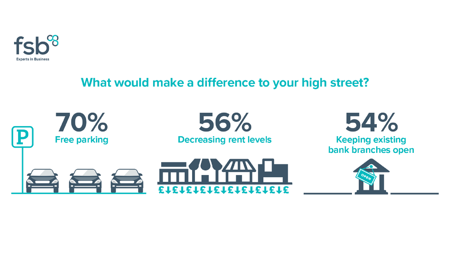
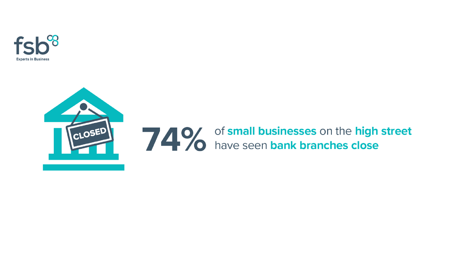
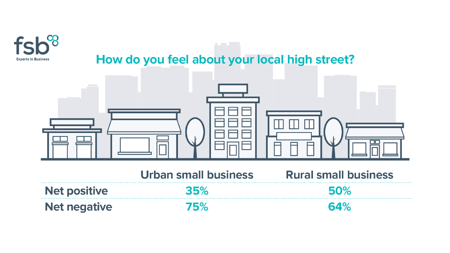
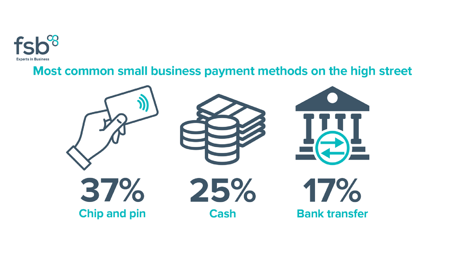
The Issue
High streets are hard to miss. Virtually every town, most villages, and all cities have at least one or more high streets. Some, particularly in rural areas, may comprise of just a small handful of shops and services, whereas others extend for kilometres. The longest high street in Britain is 2,983m located in Southend-on-Sea[1]. High streets are also vitally important for small businesses, with just over one third (34%) of small businesses located on or next to the high street.
The scope of this report includes proposals that are UK wide and proposals for both the UK Government and local authorities in England.
Generally, a high street can be thought of as the main shopping area of a village, town or city, where a concentration of shops, banks and other services can be found. For the purposes of this report, we have allowed our members to self-identify high streets, as enforcing a strict identification could unduly discount candidates and misrepresent the highly varied nature of high streets across the UK. We have also grouped together those businesses identifying as being on the high street with those adjacent to the high street. This is because although a small business may not be on the primary high street, secondary high streets are strongly dependent on the same factors for success.
This research report draws upon the insights of FSB members across the UK and includes empirical quantitative analysis based on survey results and qualitative analysis based on semi-structured interviews including with FSB members.
This report is divided into seven sections. The first section explores small businesses perceptions of their high street as well as looking at the variety of business models of small businesses on the high streets and their contribution to employment. Later in the report we focus on the importance of local small businesses taking an active role in determining the shape and future of their high street, and how they can work with local authorities in England to tackle the issues that have the most significant impact on their areas. These issues can range from parking through to potholes.
These challenges need to be considered within the wider context of how to ‘level-up’ our high streets and make them more environmentally sustainable. Finally, we move on to ‘bread and butter’ issues related to taxation, access to cash and external finance. This includes focusing on business rates, banking and the importance of cash to small businesses on our high streets. This report sets out a series of recommendations for national policy makers and local authorities in England to consider.
The recommendations in this report fall into two categories, the first of which is what we want to see in a High Streets Strategy. We believe every local authority in England should create and implement a High Streets Strategy containing interventions that can be delivered locally. The second category comprises of interventions which we want to see delivered by the UK Government.
[1]OS and ONS release report on the geography of Britain’s high streets
The Evidence
Small business perceptions of their high streets
-
 Small businesses in rural areas have a greater proportion of small businesses which are positive about their high street (50%) than those small businesses in urban locations (35%)
Small businesses in rural areas have a greater proportion of small businesses which are positive about their high street (50%) than those small businesses in urban locations (35%) - Yorkshire, Humber and the North East regions have the largest proportion of small businesses who are negative towards the high street (75%), with, London and the South West the most positive (56%)
- At a national level, England has the largest proportion of small businesses who are positive about the state of their high streets (42%), with Wales having the largest proportion of small businesses who have a negative perception (81%)
Small business models on the high street
-
 38 per cent of all small businesses sell only or mainly goods, with this rising to 52 per cent for small businesses on the high street
38 per cent of all small businesses sell only or mainly goods, with this rising to 52 per cent for small businesses on the high street - 52 per cent of all small businesses sell only or mainly services, with this falling to 36 per cent for small businesses on the high street
- 17 per cent of all small businesses mainly sell goods, but also sell some services This rises to 25 per cent for those small businesses which are on the high street
- 84 per cent of small businesses on the high street engage customers online, as well as through their physical premises
Contribution of small businesses to employment
-
 Over two thirds (68%) of small businesses on the high street employ up to nine people (micro businesses)
Over two thirds (68%) of small businesses on the high street employ up to nine people (micro businesses) - 17 per cent of small businesses on the high street employ between 10-49 staff (small businesses)
- Two per cent of small businesses on the high street employ 50- 249 staff (mid-sized businesses)
Empty properties
- 40 per cent of all small businesses state that making vacant units available for rent was one of the biggest changes that should be made to help their high street
- 26 per cent of all small businesses say more flexibility in planning rules would help to bolster their high street
Small businesses and their local communities
-
 30 per cent of small businesses on the high street feel they form part of the local leadership of their high street, with 17 per cent considering they are not currently part of the local leadership but hoping that they would be so in the future
30 per cent of small businesses on the high street feel they form part of the local leadership of their high street, with 17 per cent considering they are not currently part of the local leadership but hoping that they would be so in the future - Of those smaller businesses that identify as being engaged in the local leadership of their high street, the most common method of involvement is via their local authority (45%)
Parking
- 70 per cent of small businesses on the high street say that enhancing parking availability would make one of the biggest differences to their high street
Taxation for small businesses on the high street
-
 If business rates relief were to be removed, 67 per cent of small businesses on the high street which are currently in receipt of these reliefs, would close down their premises, or reduce the hours worked by their staff
If business rates relief were to be removed, 67 per cent of small businesses on the high street which are currently in receipt of these reliefs, would close down their premises, or reduce the hours worked by their staff - Over half (54%) of small businesses on the high street say they would not survive were itnot for the reliefs This proportion rises steeply to 74 per cent for applicable small businesses in Scotland
- 28 per cent of small businesses on the high street, currently in receipt of reliefs, would commit to capital investment in their business (equipment, training, stock) if the level of the reliefs were to be increased
- 17 per cent of small businesses in receipt of reliefs on the high street say they would expand their business if the level of relief were to be increased
- 42 per cent of small businesses on the high street do not understand their business rates bill
- Of those smaller businesses that have queried their bill, the most common method for doing this is via a local authority (57%)
Relationship between small businesses and banks on the high street
-
 74 per cent of small businesses on the high street have seen bank branch closures on their high street
74 per cent of small businesses on the high street have seen bank branch closures on their high street - 43 per cent of small businesses on the high street value the face-to-face relationship they have (or had) with their local bank
- 59 per cent of small businesses on the high street require a local bank to make regula rcash deposits
Use of cash by small businesses on the high street
- The most commonly used method of taking payment for small businesses on the high street is cards, with cash the second most common
- Bank transfer is the most common method of payment for all small businesses, irrespective of location
The Solutions
High Street Strategy
(England Only - Local Authority recommendations)
Each local authority in England should develop a strategy for how to bolster the economically active populations of high streets, considering immediate surrounding residential areas, as well as local offices, services and other concentrations of economically active populations.
UK Government recommendations
Download the full report below.Streets Ahead report



